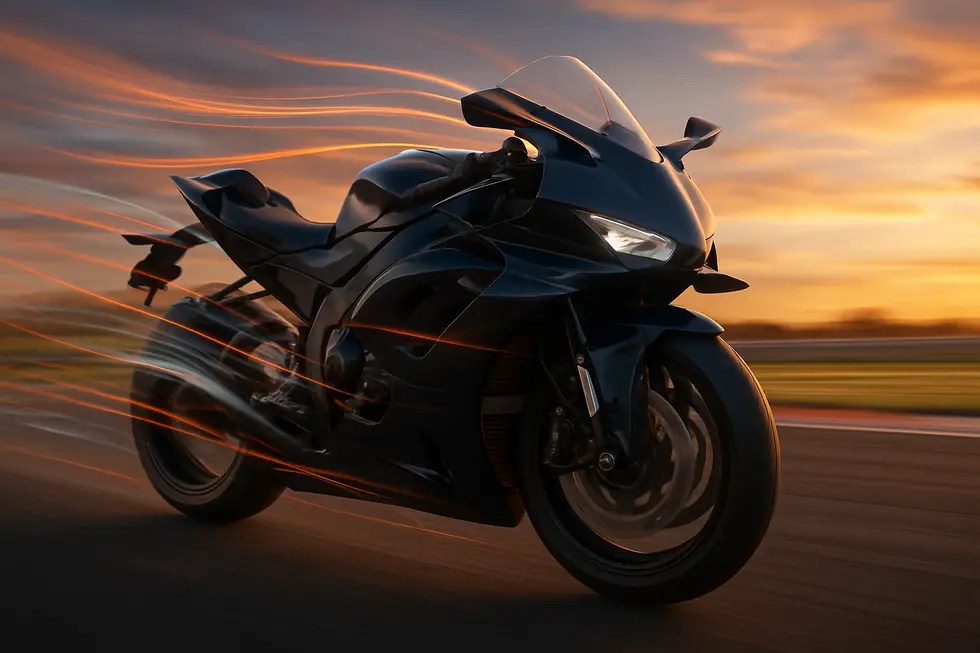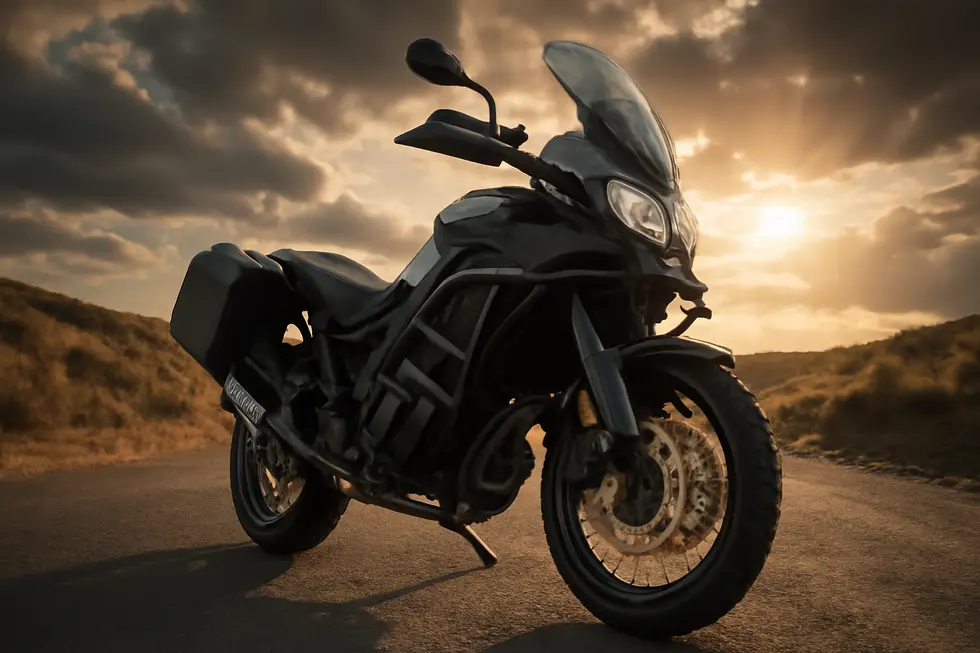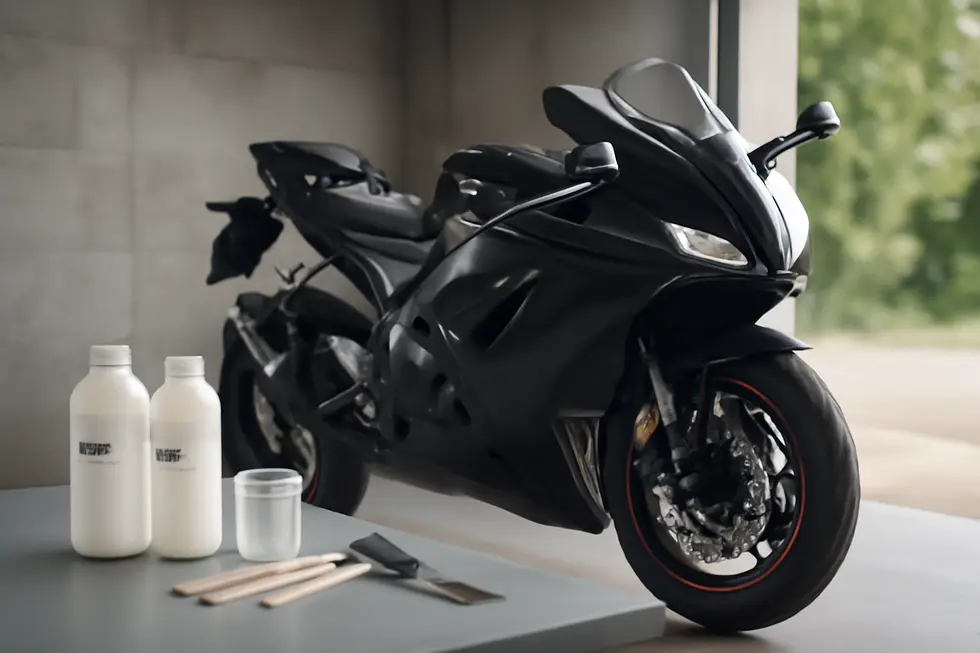Motorcycle Cafe Fairings: Blending Vintage Style with Modern Performance
October 4, 2025 | by summitfairings
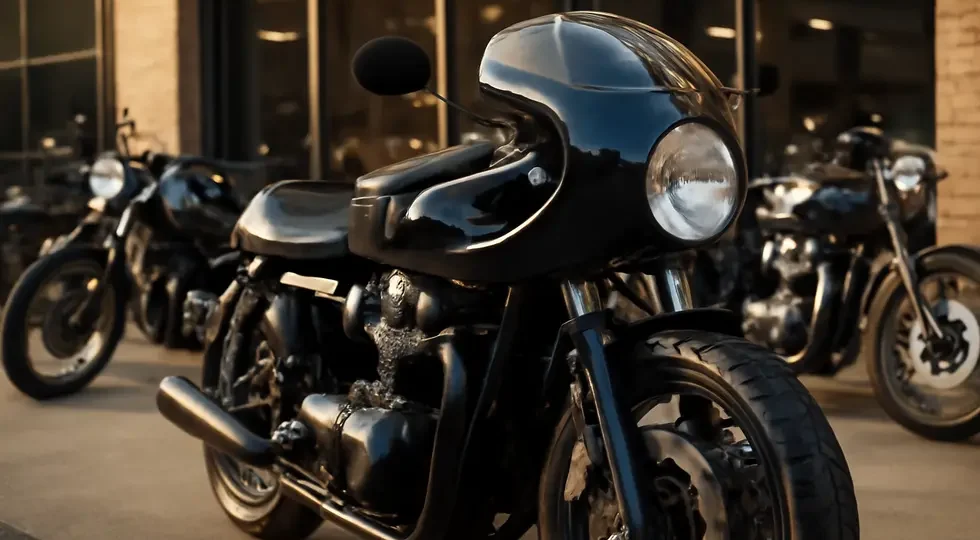
Introduction
Motorcycle café fairings have become essential components for riders and businesses seeking to combine retro aesthetics with functional enhancements. These fairings, inspired by the classic café racer style, offer lightweight aerodynamic protection that appeals to both vintage enthusiasts and practical riders. For business owners, understanding the key elements of café fairings—from their design and materials to compatibility, market availability, and the benefits they provide—can unlock opportunities to capitalize on growing consumer interest and customize offerings strategically. This guide navigates through the essential facets of motorcycle café fairings, detailing the craftsmanship involved in their construction, the importance of precise fitment, insights into manufacturer and market trends, and the dual advantages of their functional and aesthetic appeal. Each chapter builds on the previous one to provide a comprehensive overview tailored specifically for commercial stakeholders.
Tables of Contents
Chapter 1: Design and Materials of Motorcycle Cafe Fairing
- Harmonizing Vintage Style and Aerodynamics: The Art and Science of Motorcycle Cafe Fairing Design
- Material Innovation and Economic Trade-Offs in Motorcycle Cafe Fairing Design
Chapter 2: Ensuring Perfect Fit: The Synergy of Compatibility and Material Quality in Motorcycle Cafe Fairings
- Balancing Fitment Precision and Material Performance for Optimal Cafe Fairing Integration
- Seamless Harmony: Achieving Perfect Fit and Visual Unity with Motorcycle Cafe Fairings
Chapter 3: Market Availability and Manufacturer Offerings for Motorcycle Cafe Fairing
- Navigating Factory and Aftermarket Options for Motorcycle Cafe Fairings
- Exploring Pricing, Materials, and Consumer Focus in Motorcycle Cafe Fairings
Chapter 4: Functional Benefits and Aesthetic Appeal of Motorcycle Cafe Fairing
- Streamlined Performance and Rider Comfort: How Cafe Fairings Enhance Aerodynamics and Protection
- Crafting Timeless Style: How Cafe Fairings Enhance Motorcycle Aesthetics With Classic and Contemporary Flair
Chapter 1: Design and Materials of Motorcycle Cafe Fairing
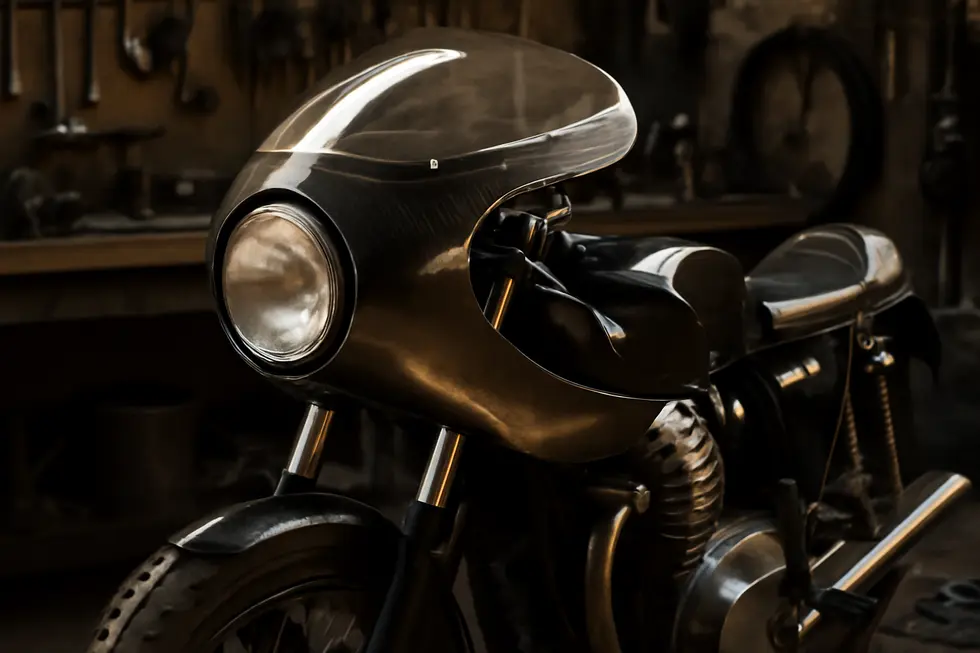
1. Harmonizing Vintage Style and Aerodynamics: The Art and Science of Motorcycle Cafe Fairing Design
Motorcycle cafe fairings represent a unique fusion of nostalgic design and aerodynamic refinement, capturing the soul of classic café racers while advancing the functional demands of modern riding. At first glance, these fairings evoke the sleek, minimalist elegance of 1960s British motorcycles, yet beneath the surface lies a thoughtful approach to airflow management and rider comfort.
The aesthetic appeal of cafe fairings is inseparable from the iconic profile they create. Carefully sculpted to align with key motorcycle elements—such as the stepped seat, dropped handlebars, and muscular fuel tank—these fairings form a cohesive visual language that resonates with the spirit of speed and rebellion. The fairing’s curved contours frame the headlight and flow seamlessly into the bike’s existing lines, producing an aggressive yet graceful silhouette that suggests both agility and endurance.
This design ethos embraces simplicity, avoiding bulky or overbearing structures in favor of small, partial fairings like the classic flyscreen or bikini style. Such minimalistic approaches allow the rider’s posture and the mechanical character of the machine to remain front and center, preserving the timeless charm of café racers. However, while the stylistic cues celebrate the past, the design simultaneously incorporates aerodynamic advancements aimed at reducing wind resistance and rider fatigue.
Functionally, the cafe fairing plays a vital role in streamlining airflow around the motorcycle and its operator. By channeling wind more smoothly over the rider’s body, these fairings reduce buffeting—particularly at higher speeds—enhancing stability and allowing for longer, less strenuous rides. The compact shape balances protective coverage with the need to preserve the nimble handling characteristics prized by café racer enthusiasts.
Innovations in design carefully integrate these aerodynamic benefits without sacrificing the fairing’s slim profile or vintage spirit. Lightweight materials and precise contours are employed to deflect wind effectively, while avoiding excess bulk that would detract from the bike’s balance and visual appeal. This harmony ensures the fairing supports a confident, responsive ride experience distinct from heavier, full-body fairings typical of touring motorcycles.
Contemporary interpretations of cafe fairings sometimes explore semi-fairing or slightly larger partial fairing options. These models strive to expand wind protection and weather resistance while maintaining the minimalist cues intrinsic to café racer identity. This trend reflects an evolving rider demand for increased practicality without losing the classic style that defines the category.
Ultimately, the design of motorcycle cafe fairings is an exercise in balancing heritage and innovation. Each curve and contour pays tribute to historical forms while incorporating aerodynamic principles that improve performance and rider comfort. The result is a visually compelling, functional component that elevates the motorcycle’s character and enhances every ride.
For riders and builders passionate about authentic styling enhanced by thoughtful engineering, cafe fairings represent both a nostalgic statement and a modern solution. They underscore how aesthetic inspiration and aerodynamic science can intertwine to preserve the soul of vintage motorcycles while adapting to contemporary riding needs.
To explore the intersection of style and performance in motorcycle fairings further, readers may find valuable insights in resources dedicated to the broad selection of customizable fairings and their evolving designs at Summit Fairings’ blog.
2. Material Innovation and Economic Trade-Offs in Motorcycle Cafe Fairing Design
The interplay between material technology and economic considerations significantly shapes the design and functionality of motorcycle cafe fairings. Central to this dynamic are two predominant materials: fiberglass and carbon fiber—each offering a distinct balance of strength, weight, cost, and customization potential that affects both rider experience and market offerings.
Fiberglass, often referred to as polyester in motorcycle part manufacturing, has long been favored for its affordability and versatility. Its relatively low production costs make it accessible for a broad segment of riders and custom builders. Beyond economics, fiberglass scores high on durability and repairability. Minor damages like cracks or chips can be fixed with relative ease and low expense, which is highly attractive for enthusiasts who frequently experiment with styling or put their bikes through rigorous riding conditions. Its pliability in molding also enables intricate shaping that enhances both the vintage silhouette and aerodynamic profile distinctive to cafe racers. These features support a vibrant aftermarket for fiberglass fairing kits, which cater to street riders and track users alike, providing multiple options that balance cost with performance and style.
In contrast, carbon fiber represents a more premium material choice, prized primarily for its superior strength-to-weight ratio. Its lightweight nature contributes measurably to improved acceleration, handling, and overall performance, critical considerations for riders pursuing high-end customization or competitive edge. Furthermore, carbon fiber fairings achieve a sleek, modern finish that complements the retro cafe racer aesthetic with a contemporary edge. However, this sophistication comes at a steeper price, reflecting the more complex manufacturing processes and expensive raw materials involved. For this reason, carbon fiber parts tend to target enthusiasts willing to invest significantly in performance enhancements and exclusive appeal. Unlike fiberglass, carbon fiber repair often requires specialized techniques, which can lead to higher maintenance costs. Still, for many, the performance benefits and visual impact justify these expenses.
From a design perspective, the choice between fiberglass and carbon fiber influences not only the functional characteristics but also how closely the bike’s fairing can be tailored to rider preferences. Fiberglass’s adaptability means custom shops and individual builders can produce bespoke shapes without prohibitive cost increases, empowering creative expression in replicating or reinventing classic cafe racer lines. Carbon fiber’s rigidity demands precise engineering but results in smoother, sharper contours that maximize aerodynamic efficiency while maintaining structural integrity at high speeds.
Economically, these material differences ripple through the manufacturing and aftermarket landscapes. Fiberglass’s cost-effectiveness fuels a wide availability of complete fairing kits and individual components compatible with a range of motorcycles, making cafe fairing customization achievable for many riders. Meanwhile, carbon fiber remains more niche, appealing primarily in premium markets where performance and exclusivity drive purchasing decisions. This dual-market structure encourages a healthy diversity among cafe racer builds, from budget-conscious restorations to high-performance masterpieces.
In summary, the intersection of material science and economic realties guides the ongoing evolution of motorcycle cafe fairings. Fiberglass continues to democratize customization through its affordability and ease of use, while carbon fiber pushes the frontier on performance and sophisticated aesthetics. Riders and builders thus navigate a spectrum of options, balancing cost, durability, weight, and style to create fairings that not only honor the cafe racer legacy but also advance it through modern innovation.
For riders seeking a variety of affordable and customizable choices, many options can be explored at specialized online destinations dedicated to motorcycle fairings, where the balance of material technologies and design possibilities comes into sharp focus.
Chapter 2: Ensuring Perfect Fit: The Synergy of Compatibility and Material Quality in Motorcycle Cafe Fairings
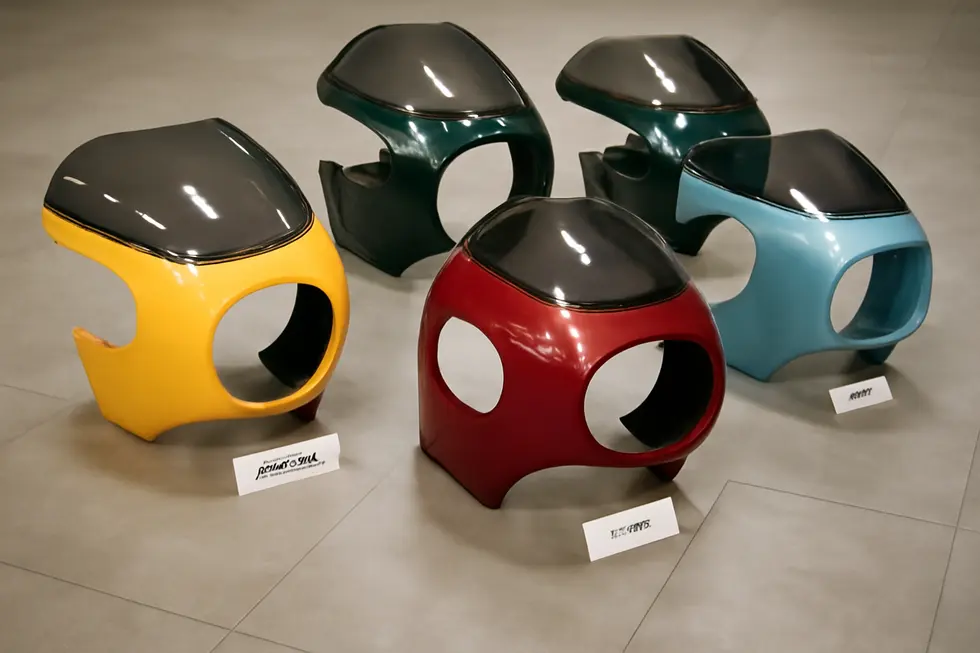
1. Balancing Fitment Precision and Material Performance for Optimal Cafe Fairing Integration
Motorcycle cafe fairings stand at the crossroads of aesthetic appeal and functional necessity, making compatibility and fitment pivotal for both visual harmony and rider comfort. These fairings come mainly in two categories: universal designs that accommodate a broad spectrum of motorcycles, and model-specific versions tailored to particular makes and models. Universal fairings generally feature standard-sized headlight cutouts—often between five to seven inches—which fit a wide array of bikes including brands such as Harley-Davidson, Honda, Yamaha, Kawasaki, and Suzuki. To bridge the differences in motorcycle geometries, these fairings typically include adjustable mounting kits or brackets capable of adapting to varying fork diameters and headlight placements. However, this versatility can sometimes come at the cost of perfect alignment, which underscores the importance of careful installation and adjustment.
On the other hand, model-specific cafe fairings, crafted for bikes like BMW’s K1600 series or the Triumph Bonneville, offer a tailored fit that minimizes the need for modifications, affording a seamless integration that respects the motorcycle’s original lines. These versions often provide superior rigidity and stability, reducing the risk of vibration-induced damage and enhancing both safety and longevity. Regardless of type, ensuring the correct fitment involves meticulous attention to mounting points and secure fastening, since improper attachment risks introducing stress cracks, misalignment of headlights, or even detachment under high speeds.
Beyond compatibility, the material composition of cafe fairings is equally crucial, influencing durability, weight, and overall performance. Among the most commonly used materials is ABS plastic, favored for its excellent balance between lightweight properties and impact resistance. ABS offers flexibility that allows it to absorb minor shocks without cracking, a vital trait for street riding conditions involving potholes and rough terrain. Its resilience against ultraviolet rays and weather exposure ensures long-lasting structural integrity and aesthetic preservation. These attributes, combined with the material’s ability to be molded into sleek, aerodynamic shapes, make ABS a popular and cost-effective choice among aftermarket manufacturers and OEM suppliers alike.
Fiberglass is another material often chosen for its lightweight and repair-friendly nature, especially in racing or high-performance contexts. While heavier than carbon fiber, fiberglass allows enthusiasts to perform quick repairs and modifications, promoting customization. The texture and finish of fiberglass provide a classic matte or glossy look that aligns well with the vintage ethos of café racers.
Carbon fiber, though less common due to its premium cost, caters to riders seeking the ultimate in weight reduction and high-strength durability. Its rigidity and superior aerodynamic potential contribute to reducing drag, enhancing speed and handling. The high-end finish also elevates the bike’s style quotient, bridging modern technology with classic design.
Choosing the right material contributes directly to the fairing’s ability to withstand environmental stressors such as wind pressure, rain, and UV exposure, factors that impact not only aesthetics but also the rider’s experience. A well-fitted fairing constructed from quality materials reduces wind fatigue by efficiently channeling airflow around the rider, which is essential for extended rides and enhances safety by minimizing distractions and fatigue.
Ultimately, the interplay of fitment precision and material quality determines not only the visual impact of a motorcycle cafe fairing but also its functional success. Riders must consider both aspects carefully, aligning their choice with their motorcycle model, riding style, and aesthetic goals. For those seeking comprehensive options and expert guidance on compatibility and material selections, exploring detailed resources like the Summit Fairings blog offers valuable insights and a wide range of possibilities to perfectly match form and function.
2. Seamless Harmony: Achieving Perfect Fit and Visual Unity with Motorcycle Cafe Fairings
Motorcycle cafe fairings represent more than just a nod to the classic café racer aesthetic; their true value lies in marrying style with precise engineering to ensure a flawless fit on the bike. The compatibility and fitment process demands careful attention to the motorcycle’s unique structure, mounting points, and the fairing’s design nuances, blending functionality with the vintage look riders seek.
Fairings are generally divided into two categories: universal and model-specific. Universal fairings offer versatility, designed to adapt to a broad array of motorcycles by utilizing common mounting systems or adjustable brackets. While this flexibility makes them an accessible option, minor adjustments often become necessary to secure a snug fit, such as repositioning mounts or drilling slight modifications. Conversely, model-specific fairings are crafted with exacting measurements tailored to particular motorcycles, ensuring that they bolt on seamlessly without compromising structural integrity or the bike’s original proportions. This precision reduces installation time and enhances the visual coherence between the fairing and the motorcycle’s frame.
Key to achieving this union is the fairing’s adherence to traditional café racer design cues, which influence both form and function. Rounded headlights—typically 7 or 8 inches in diameter—frame the front, anchoring the fairing’s presence while maintaining period-correct authenticity. The streamlined bodywork that envelops these headlights is thoughtfully sculpted to echo the minimalist ethos of café racers, emphasizing clean lines and a compact profile that complements various styles of handlebars and forks. These design elements contribute to a cohesive aesthetic that integrates smoothly with the motorcycle’s existing components.
Material selection also plays a vital role in fit and finish. Durable, lightweight materials such as ABS plastic and fiberglass dominate the market, prized for their balance of rigidity and flexibility, which aids both in mounting ease and long-term durability. Higher-end fairings occasionally utilize carbon fiber, imparting weight savings and a premium tactile quality, appealing to riders seeking both performance benefits and distinctive looks. Finishes range from high-gloss and matte to authentic carbon fiber textures, allowing installation to enhance or subtly blend with the motorcycle’s original paint and hardware. This variety ensures the fairing complements everything from a freshly restored vintage bike to a modern café racer build.
Another critical aspect is the incorporation of modest windshields that serve multiple purposes. These small aerodynamic screens improve rider comfort by reducing windblast, lessening fatigue on longer rides. At the same time, they preserve the classic silhouette without overwhelming the bike’s lines, striking a balance between modern practicality and retro charm. Proper installation ensures the windshield angle matches the rider’s posture and the bike’s aerodynamics, optimizing both style and function.
Ultimately, the success of integrating a cafe fairing hinges on a holistic approach—understanding the bike’s architecture, selecting a fairing that conforms both dimensionally and stylistically, and executing installation with precision. Ensuring mounting points align and the fairing’s contours flow naturally with the motorcycle’s frame delivers not only secure attachment but also the visual harmony essential to authentic café racer appeal. Riders are advised to consult detailed fitment guides and verify compatibility with their motorcycle model before purchase.
This approach to seamless compatibility ensures that the fairing does not appear as an afterthought but as a natural extension of the motorcycle itself. For riders seeking expert guidance or a comprehensive selection of fairings to match their build, exploring specialized sources for motorcycle fairings can be invaluable resources that combine style, fit, and function in perfect balance.
Chapter 3: Market Availability and Manufacturer Offerings for Motorcycle Cafe Fairing
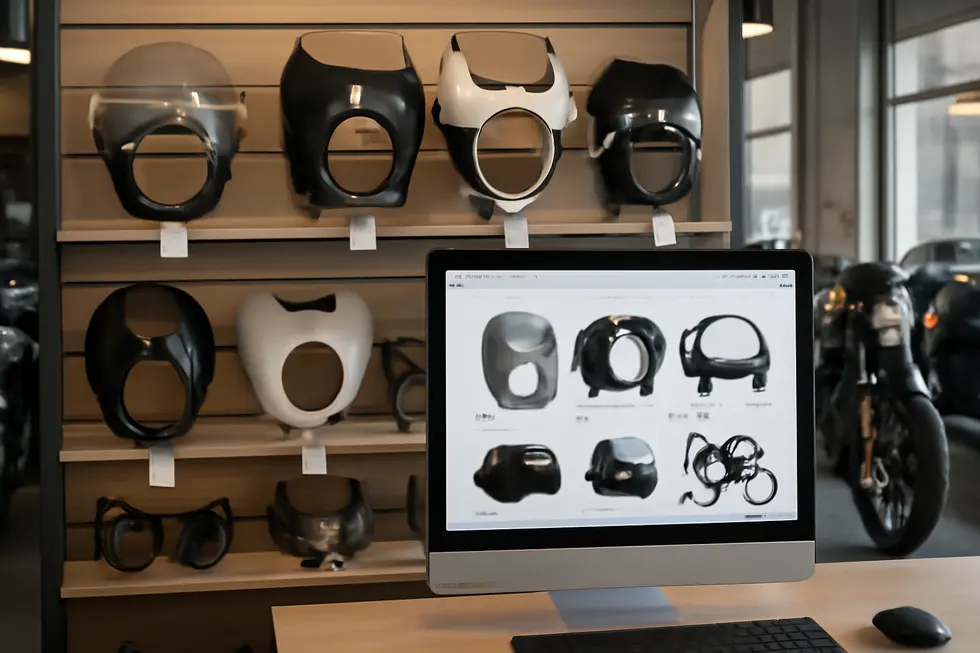
1. Navigating Factory and Aftermarket Options for Motorcycle Cafe Fairings
The availability of motorcycle cafe fairings spans a dynamic blend of factory-made and aftermarket sources, catering to riders who seek both authentic OEM quality and extensive customization possibilities. While factory, or OEM, options tend to focus on specific heritage or special-edition models, the aftermarket market thrives on variety, offering countless choices to fit a broad range of motorcycles and stylistic preferences.
Within factory offerings, only a handful of manufacturers integrate cafe-style fairings directly into their production lineups or accessory catalogs. These are often found on heritage-inspired models that celebrate motorcycling’s golden era. For instance, certain classic series include half-fairings designed with the factory’s own specifications to ensure a seamless fit and finish. Such fairings embody the spirit of cafe racers with their minimalist, streamlined profiles and help preserve the original aesthetics and functionality without the need for extensive modification. Nonetheless, these factory options are generally limited in availability and variety, with most mainstream motorcycles built as naked or full-faired machines rather than cafe-inspired models. Even in cases where OEM windscreens or small fairing pieces are offered as accessories, these tend to be subtle nods to cafe styling rather than comprehensive design statements.
By contrast, the aftermarket landscape provides a rich arena of possibilities for riders aiming to tailor their motorcycles to cafe racer ideals. This sector includes everything from universal mount flyscreens to full cockpit fairings engineered for specific classic models. The spectrum of design ranges from minimalistic wind deflectors to aggressive, retro-infused batwing styles that transform a bike’s silhouette while enhancing aerodynamic performance. Aftermarket suppliers cater to a wide demographic—from budget-conscious enthusiasts pursuing generic fits to aficionados seeking high-fidelity replicas of iconic cafe racer fairings made from premium materials.
Specialist manufacturers excel in producing model-specific kits that replicate legendary styles, often incorporating modern materials and mounting hardware to simplify installation. These kits provide an authentic vintage look without the complexity or cost of bespoke fabrication, allowing owners to restore or recreate classic aesthetics with precision. Beyond replica fairings, many aftermarket brands offer complementary components such as CNC-machined brackets, anodized hardware, seats, and lighting upgrades that reinforce the cafe racer ethos throughout the bike’s appearance.
Global sourcing platforms further expand access, enabling riders and custom shops to procure wholesale parts that support both restoration projects and innovative builds. Though quality and pricing vary widely in these markets, they offer flexible options for those who desire extensive customization or who operate within constrained budgets. This democratization of availability encourages the widespread adoption of cafe fairings, nurturing the culture of personalization that defines the cafe racer community.
Ultimately, the choice between factory and aftermarket cafe fairings involves balancing authenticity, fitment precision, design preference, and cost. Factory fairings provide certainty in compatibility and heritage alignment but remain limited to select models. In comparison, the aftermarket unlocks broader creative freedom and variety, making it the primary resource for riders aiming to achieve the distinct cafe racer aesthetic on a diverse range of motorcycles. For enthusiasts eager to explore an extensive inventory of offerings, including both universal parts and specialized kits, accessing dedicated motorcycle fairing suppliers reveals an unmatched selection and expert guidance in cafe fairing customization options. More on this can be found at your ultimate source for affordable motorcycle fairings.
2. Exploring Pricing, Materials, and Consumer Focus in Motorcycle Cafe Fairings
The market for motorcycle cafe fairings reflects a vibrant and diverse ecosystem where traditional aesthetics meet modern manufacturing innovation. Across various producers and retailers, offerings span a broad spectrum in pricing, materials, and intended users, enabling riders to select fairings that align precisely with their personal style, budget, and performance expectations.
Pricing structures within this segment are shaped by factors such as material quality, design complexity, and degree of fitment specificity. At the more accessible end, universal or semi-universal offerings crafted from durable plastics or ABS typically start around seventy dollars. These are attractive to hobbyists and those customizing on a budget, providing essential wind protection while delivering the unmistakable café racer silhouette. Mid-tier products, often priced between a hundred and two hundred dollars, usually feature fiberglass construction with improved finish quality and tailored fitment options. At the premium end, kits can surpass three hundred to nearly four hundred dollars, reflecting the use of carbon fiber or finely finished fiberglass combined with precise engineering for model-specific compatibility. Such offerings cater to enthusiasts seeking authenticity and enhanced performance through superior materials and craftsmanship.
Material selection plays an integral role in determining not only cost but functionality and aesthetics. Fiberglass remains a popular choice due to its well-rounded profile—lightweight, sturdy, and receptive to smooth finishing techniques that allow fairings to achieve a glossy, polished surface evoking vintage charm. Many replica kits for classic models utilize this material to replicate original fairing profiles with attention to detail and manageable weight. Plastics such as ABS and polycarbonate are favored in designs emphasizing impact resistance and reduced weight, particularly in universal fitments intended for broader compatibility and easier installation. Carbon fiber, although less common due to higher expense, appeals to riders prioritizing top-tier durability alongside subtle weight savings and a high-end appearance.
Consumer targeting within this market is notably broad, accommodating several rider demographics. Traditionalists and vintage motorcycle collectors often seek fairings that faithfully recreate historic café racer motifs, with exact-fit models tailored to classics like the BMW R90S or Honda CB series. These consumers value authenticity and are willing to invest in high-fidelity replicas that elevate their bike’s period-correct styling while providing modern usability. Conversely, contemporary riders interested in combining retro style with current riding demands gravitate toward versatile fairings that harmonize aesthetic appeal with functional wind deflection and aerodynamic efficiency. Furthermore, the emerging niche of electric café racers introduces an eco-conscious segment, where riders desire classic silhouettes merged with advanced electric powertrains. This intersection of style and sustainability marks a progressive direction within fairing offerings.
Overall, the breadth of product availability, spanning affordable plastic windshields to expertly crafted fiberglass replicas and cutting-edge carbon fiber kits, illustrates the market’s responsiveness to diverse rider preferences. Products today not only rejuvenate the enduring café racer archetype but also enhance rider comfort and performance through sophisticated material use and refined design. Enthusiasts can access extensive selections through specialized retailers known for quality aftermarket components, ensuring a tailored experience regardless of budget or motorcycle model. For those interested in exploring a wide range of fairing choices with attention to both style and function, visiting a dedicated source for affordable motorcycle fairings offers valuable insights and options.
This dynamic market landscape confirms that motorcycle cafe fairings continue to serve as a powerful customization element, bridging classic flair and modern engineering. They cater effectively to riders seeking to personalize their machines in both form and function without compromising on the heritage or practical benefits inherent in the café racer tradition.
Chapter 4: Functional Benefits and Aesthetic Appeal of Motorcycle Cafe Fairing
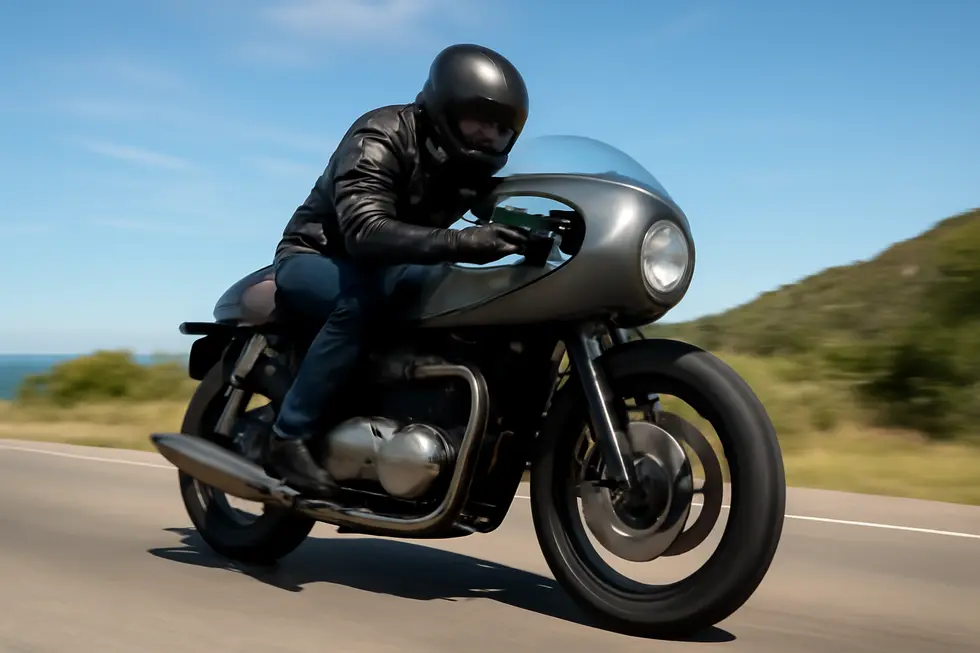
1. Streamlined Performance and Rider Comfort: How Cafe Fairings Enhance Aerodynamics and Protection
Motorcycle cafe fairings are more than just nostalgic style statements; they are carefully engineered components that significantly enhance a motorcycle’s functionality in multiple ways. By embracing the sleek, compact design synonymous with the cafe racer tradition, these fairings streamline the motorcycle’s front profile. This streamlining reduces aerodynamic drag, which in turn lowers wind resistance as the bike speeds along roads or highways. The result is a measurable improvement in fuel efficiency, as less power is required to cut through air turbulence, allowing rides that are not only smoother but more energy-conscious.
Beyond fuel economy, the fairing’s ability to minimize turbulent air around the rider and machine translates directly to better high-speed stability. This aerodynamic advantage helps maintain balance and control, especially valuable during fast highway cruising or spirited rides through twisting roads. Some designs incorporate additional aerodynamic features like winglets or side air deflectors, which further optimize airflow and reduce disruptive wind buffeting. These subtle yet high-impact improvements contribute to a steadier, more confident ride without compromising the classic cafe racer aesthetic.
From a rider’s comfort perspective, the role of a cafe fairing is equally significant. At its core, it serves as a shield, diverting oncoming wind away from the rider’s body. This protective barrier can drastically reduce wind blast, which is a common cause of fatigue and strain during extended rides. By easing the force exerted by raw wind, riders experience less physical stress, enabling longer journeys with greater ease. The reduction in wind pressure also encourages a more natural riding posture, helping maintain endurance over time.
In colder conditions, the fairing offers essential protection against biting cold air. This can make a notable difference in regulating the rider’s body temperature and retaining warmth, enhancing comfort during chilly or windy weather. Many cafe fairings integrate windscreens that improve this effect, fine-tuning the balance between airflow and protection. These windscreens are crafted to shield the upper body and face, minimizing the need for bulky additional gear and allowing riders to focus fully on the road.
Cafe fairings also serve an important protective function for the motorcycle itself. By shielding critical components such as the engine, electrical systems, and instrumentation from rain, debris, and road grime, these fairings contribute to the bike’s longevity and reliability. They act as a first line of defense against environmental hazards that can accelerate wear or cause damage. This protective aspect reduces the need for frequent cleaning and maintenance caused by dirt accumulation, helping preserve a motorcycle’s mechanical integrity and aesthetic appeal.
The combination of these ride-enhancing features reflects a thoughtful blend of tradition and modern engineering. While preserving the unmistakable visual identity of cafe racers, these fairings simultaneously push the boundaries of performance and rider well-being. Their ability to harmonize aerodynamic efficiency, comfort, and component protection contributes to their enduring popularity among motorcycle enthusiasts.
For riders exploring customization options, cafe fairings offer a chance to upgrade not only appearance but also the overall motorcycling experience. Detailed insights and a wide selection of styles can be found in resources like the explore the best motorcycle fairings at Summit Fairings collection, where performance and style converge.
By enhancing aerodynamic flow and providing substantial wind deflection, cafe fairings stand as a practical upgrade for riders who value both form and function. Their role in reducing fatigue, protecting vital components, and stabilizing high-speed performance encapsulates how a well-designed motorcycle fairing can transform everyday rides into more enjoyable, controlled, and enduring journeys.
2. Crafting Timeless Style: How Cafe Fairings Enhance Motorcycle Aesthetics With Classic and Contemporary Flair
Motorcycle cafe fairings occupy a unique space where vintage charm meets modern styling, elevating a motorcycle’s visual identity while serving practical purposes. Their aesthetic appeal is rooted in the skillful fusion of retro design principles and contemporary craftsmanship, resulting in fairings that not only protect riders but also transform the entire silhouette of the bike into a rolling homage to café racer culture.
The hallmark of cafe fairing design is its minimalist yet purposeful form inspired by the 1960s British café racers. These fairings often feature a sharply tapered profile and smooth curves that streamline the front end, giving the motorcycle an aggressive, aerodynamic stance. This shape conjures images of speed and agility, reflecting the original ethos of café racers that prized lightweight performance and stylish simplicity. Yet, these historic cues are reinterpreted through modern materials and detailing, creating a visual dialogue between past and present.
Contemporary cafe fairings commonly integrate advances such as LED lighting, ergonomic cockpit layouts, and precision-cut vents or contours that improve airflow around the rider. These enhancements ensure that while the fairing keeps its vintage-inspired essence, it also meets the demands and sensibilities of today’s motorcyclists. For instance, smooth, durable fiberglass or carbon fiber shells replace older, heavier materials, offering sharper lines and cleaner finishes that highlight the bike’s aggressive character without ornamentation that feels outdated or bulky.
Beyond shape and materials, visual customization plays a vital role in the cafe fairing’s iconic appeal. Many riders embrace hand-painted details, subtle pinstriping, or carefully selected color schemes that recall classic paint jobs from the golden era of café racers. Leather-trimmed accents or brushed metal finishes further contribute tactile richness and authenticity. These elements come together to craft a deeply personal expression of the motorcycle’s identity, linking the rider emotionally to the machine and its cultural lineage.
The integration of cafe fairings with other custom parts such as elongated fuel tanks, café-style seats, and streamlined exhausts forms a cohesive aesthetic statement. Every component complements the others, creating a unified look that is instantly recognizable and full of attitude. This purposeful coordination preserves the motorcycle’s core character while amplifying its road presence and visual performance.
Ultimately, the appeal of motorcycle cafe fairings transcends mere decoration. They embody a philosophy that values simplicity, function, and style equally. The fairings turn motorcycles into stunning hybrids of heritage and innovation, attracting enthusiasts who appreciate artistry as much as engineering. For those interested in exploring a wide range of custom styles and designs that celebrate this blend of retro and modern aesthetics, resources featuring extensive collections of motorcycle fairings offer invaluable inspiration and options.
Final thoughts
Motorcycle café fairings represent a vital intersection of design innovation, precise engineering, and stylistic homage that business owners in the motorcycle industry can leverage to meet evolving rider demands. By understanding the materials and design choices, ensuring accurate fitment across popular models, and recognizing market dynamics alongside manufacturer offerings, businesses can strategically position themselves within a growing segment. Moreover, the combination of functional advantages like wind protection and aerodynamic efficiency with unmistakable vintage appeal provides a compelling value proposition for consumers. Embracing café fairings not only allows businesses to offer superior, customizable products but also connects them to a passionate community of motorcycle enthusiasts eager to merge heritage with performance. In sum, café fairings are more than accessories—they are strategic assets that blend tradition with modern demand, driving both sales and brand distinction.
Ready to elevate your ride? Summit Fairings delivers premium, custom-fit fairings that blend style and durability. Whether you’re chasing speed or turning heads, we’ve got your bike covered. Don’t wait—transform your machine today. Click, customize, and ride with confidence. Your perfect fairing is just a few clicks away. Act now!
About us
undefined
RELATED POSTS
View all

